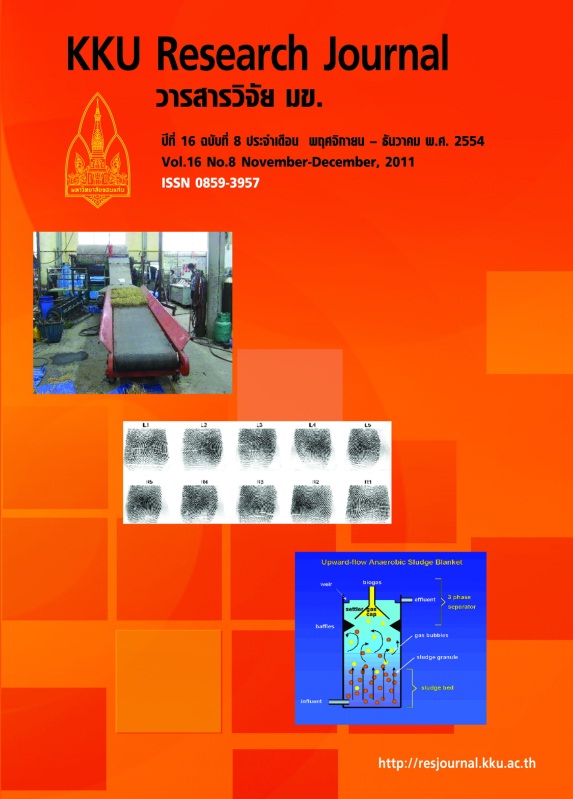The efficiency of up-flow anaerobic sludge blanket and internal circulation wastewater treatment systems
Main Article Content
Abstract
The efficiency of Up-flow Anaerobic Sludge Blanket (UASB) and Internal Circulation (IC) wastewater treatment systems was conducted on four parameters. Studies were taken between July and August 2010. They were biochemical oxygen demand (BOD), chemical oxygen demand (COD), suspended solids (SS) and dissolved solids (DS). The results of this study showed that the UASB system had the efficiency to reduce BOD, COD, SS and DS were 88.10 %, 79.80 %, 77.17 %, 16.98 %, respectively. The IC system also had the efficiency to reduce BOD, COD, SS and DS were 89.31 %, 87.30 %, 58.29 %, 33.67 %, respectively. According to these results, the IC system had more efficiency than the UASB system in reduction BOD, COD and DS. Because of the IC system could maintain more microorganisms in a large-number. Meanwhile, the UASB system had more efficiency than the IC system in reduction of SS. Water quality after being treated from the two systems still failed the quality standards of industrial effluents, for instance, BOD, COD and SS values, with the exception of DS values that fell within standard values. These could be concluded that the treated wastewater from the two treatment systems, still need to be further treated before being released into natural environment.


